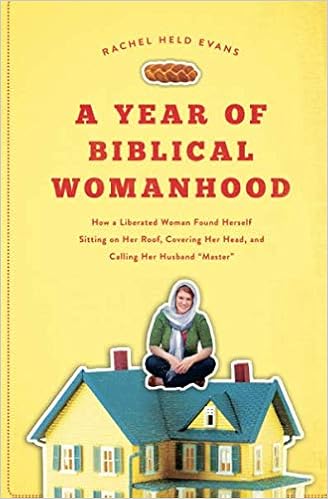 |
| Reactors 3 and 4 at Chernobyl |
It's now 33 years since April 26, 1986, when the fire at Chernobyl nuclear plant in the Ukraine spread radioactive smoke over Europe.
Episode 5 of the new HBO mini-series Chernobyl is titled "Vichnaya Pamyat" --Ukrainian for "eternal memory."
Eternal indeed--we may not remember Chernobyl as we pursue our daily lives, but the area won't be safe for human habitation for at least 20,000 years according to a report on Live Science.
The cement covering constructed to contain remaining radiation will last 100 years. It will have to be rebuilt 200 times, I guess. If anyone is around to do that.
The USSR only admitted to 31 deaths, but estimates range from 4,000 to 200,000 or more, including deaths from cancers and radiation sickness.
Clearly, we all need to understand what happened and the causes. If you haven't seen it yet, you need to watch these five one-hour episodes.
My brother works as a maintenance engineer in the nuclear power plants near Augusta, Georgia. He says I have often wondered how – as a nuclear designer ‘terrorist’ of sorts – you could make a more lethal dangerous nuclear plant event than the RMBK one that caused what happened at Chernobyl.
I've been emailing back and forth with him about the various causes. He sent me a four-page single-spaced analysis of the event. I studied it.
Former Soviet leader Mikhail Gorbachev said that the true cause of the collapse of the Soviet Union was Chernobyl--one of the closing statements in the last episode.
The series is less about nuclear power than about secrecy and lies in the USSR that led to the meltdown, as my husband noted.
It's sometimes blamed on a "graphite fire," but the meaning is actually "the graphite-caused fire." (Graphite doesn't burn.) Another factor was doing things cheaply, such as not covering the reactor building. In Europe and the US reactors have always been at least one back-up covering.
The show makes it clear that problems started with a safety test that, once underway, should not have been delayed. A call from Moscow ordered the delay because "we need electricity." Apparently the day shift knew how to do the test, but the night shift didn't. Operation fell to the night workers, who were poorly trained and just following instructions, and some of them were crossed out. They weren't adequately trained and there was secrecy--they weren't told key things, like about the shut-down button.
"Imagine if Yuri Gargarin had stepped into his spaceship and been told nothing, just given a list of instructions with some of the things crossed out," says Valery Legasov, Soviet scientist and chemist, in the HBO version of the Soviet trial after the disaster.
This show is all about the pressure from above that caused multiple bad decisions. The USSR had to be perfect--no errors could be acknowledged.
"Any system with too strong an ideology... leads to exclusion of facts," comments Jared Harris, the actor who plays Legasov.
The miniseries is based in large part on the memories of Pripyat locals, as told by Belarusian Nobel laureate Svetlana Alexievich in her book, Voices from Chernobyl, according to Wikipedia.
Key characters:
Anatoly Dyatlov, deputy chief engineer of the plant at Chernobyl, chillingly played by Paul Ritter. He insists on delaying the test and then on doing instructions that had been crossed out. His final mistake--insisting on firing up the reactors fast when it needed to be done very slowly. Even the ignorant lower guys in the control room knew when to stop, but Dyatlov threatened them with losing their jobs if they didn't do what he ordered--which was to fire up the plant very fast when the core was cooling.
Valery Legasov, a chemist and good guy of sorts who testifies honestly at a Soviet trial after earlier lying in Vienna (on Soviet orders) at a European meeting about it. After the Soviet trial, he's told he will not be shot for testifying against the Soviet lies and secrecy if he keeps his mouth shut. He'll be allowed to live quietly somewhere, but he refuses, writes about Chernobyl (and his text is "lost"?) and later commits suicide. In his testimony in Episode 5, Legasov says that at 12:25 am the reactor was trying to slow down. If they had run it at half power for 10 hours, it would not have run away. Instead they "pulled this reactor back like a sling shot."
Ulyana Khomyuk, played by Emily Watson. Writer Craig Mazin simplified the story by taking all the good scientists opposing bad decisions and wrapping them into one character, Ulyana Khomyuk. Of course, I like his decision to give a woman this voice of truth. She urges the chemist, Valery Legasov, to testify even though he will probably be executed for doing so.
My brother explained the series of events in the Chernobyl explosion:
1) a steam bubble explosion,
2) asphaltic material used on the roof and as insulation melting and pooling around remnants of the reactor,
3) this material catching fire from the broken core,
4) wind distributing the radioactive burned source material.
The series dramatizes the factors and decisions that led up to everything. "Yes, mistakes occurred in the control room, but ultimately the system was guilty--the Soviet state," says the Swedish director Johan Renck in an outtake.
See also:
_(NSF).jpg/300px-Research_on_Iceberg_B-15A_by_Josh_Landis%2C_National_Science_Foundation_(Image_4)_(NSF).jpg)












